Complications and technical failures
1. Frequent complications
- Infection (general complication)
- Nonunion
- Malunion
- Malalignment
- Posttraumatic arthritis
Nonunion, malunion, and malalignment may all cause functional disability. If symptomatic, revision surgery is often indicated.
Malalignment with articular malunion is commonly associated with degenerative arthritis. If symptomatic, reconstruction surgery may be indicated.
For details on posttraumatic arthritis refer to:
- Andersson JK, Hagert E, Brittberg M. Cartilage Injuries and Posttraumatic Osteoarthritis in the Wrist: A Review. Cartilage. 2021 Dec;13(1_suppl):156S–168S.
2. Nonunion
Signs for nonunion are pain and nonbridging healing on x-ray or CT in a period of 6–9 months after treatment.
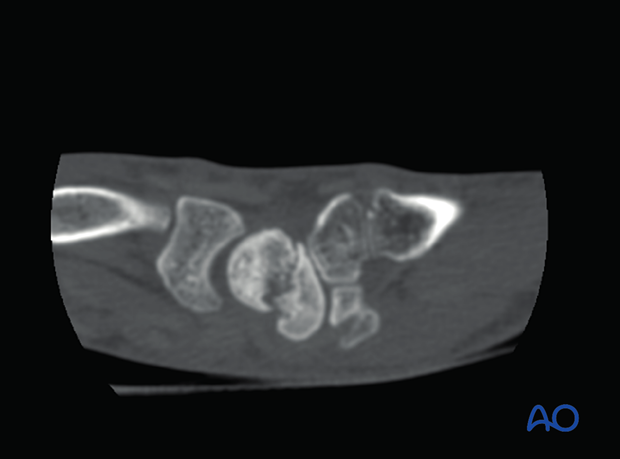
Prevention
- Gentle operation technique to avoid damage to soft tissue and vascular supply
- Intraoperative assessment of construct stability
- Postoperative radiological assessment of reduction and fixation
Concomitant injuries should be addressed at the same time as the fracture to improve stability.
Appropriate postoperative management will help to protect the fracture from secondary displacement.
Management of nonunion
Treatment of nonunions includes:
- Nonunion resection (image)
- Bone graft application
- Stable internal fixation
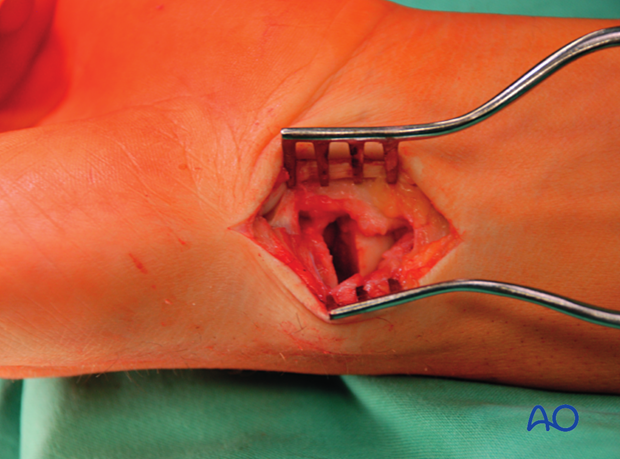
Corticospongious bone graft
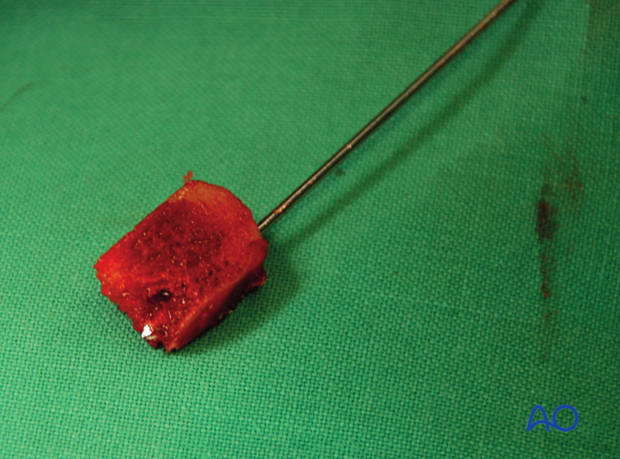
3. Malunion
Prevention
- Anatomical reduction
- Stable fixation
- Intraoperative assessment of construct stability
- Postoperative radiological assessment of reduction and fixation
Management of malunion
- Corrective osteotomy
- Bone graft application (image), if necessary
- Stable internal fixation
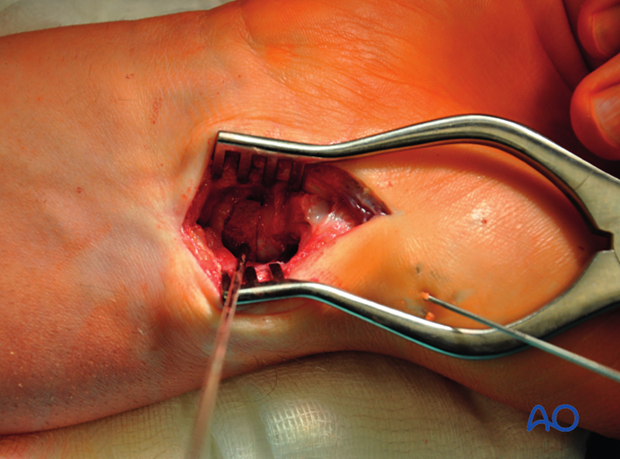
CT of a scaphoid malunion managed with bone graft and headless compression screw
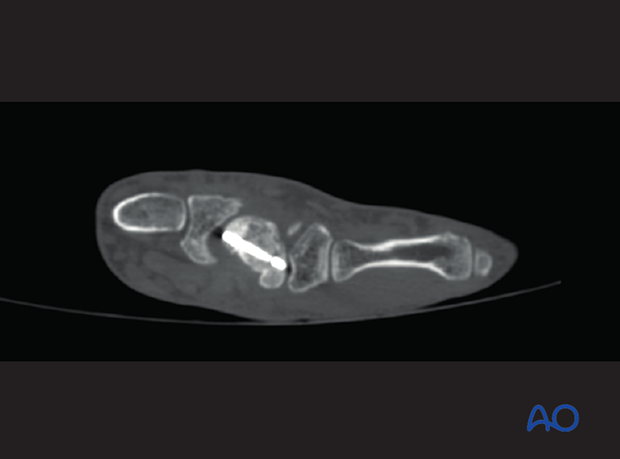
4. Malalignment
Prevention
- Anatomical reduction
- Stable fixation
- Intraoperative assessment of construct stability
- Postoperative radiological assessment of reduction and fixation
Management of malalignment
- Corrective realignment
- Soft-tissue revision and reconstruction
- Stable internal fixation












